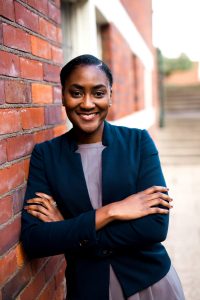Modus Outcomes is excited to announce the qualification of the BREAST-Q Reconstruction Module under the FDA Medical Device Development Tools (MDDT) program.

The process of qualifying BREAST-Q, including development of the qualification package, interacting with FDA staff, and organising key meetings, was expertly led by Modus Outcomes’ Senior Research Scientist, Dr Farrah Pompilus.
The BREAST-Q PRO instrument was developed by Dr Andrea Pusic (Brigham & Women’s Hospital), Dr Anne Klassen (McMaster University) and Modus Outcomes’ Dr Stefan Cano. Since its inception in 2009, the BREAST-Q has been used in surgical research, clinical trials, clinical practice, and quality improvement initiatives [1], including clinical guidance [2], national registries [3,4], audit [5,6] and to produce normative data [7].
The BREAST-Q Reconstruction Module is a self-administered PRO instrument developed to quantify different aspects of a woman’s quality of life and satisfaction with breast reconstruction surgery; its qualification included the Physical Well-being (Chest), Psychosocial Well-being, Sexual Well-being, and Satisfaction with Breast scales.
Key advantages of using the now qualified BREAST-Q Reconstruction Module include: 1) having the ability to capture meaningful and reliable information from the patient perspective thanks to its unique concept-driven measurement approach and its Rasch-based metric; and 2) effectively being able to measure quality of life and patient satisfaction associated with different types of breast oncoplastic surgeries according to current evidence.
Interested in learning more? Please contact Melody Bauer (melody.bauer@modusoutcomes.com).
Further reading
[1] Cohen WA, Mundy LR, Ballard TN, Klassen A, Cano SJ, Browne J, Pusic AL. The BREAST-Q in surgical research: A review of the literature 2009-2015. J Plast Reconstr Aesthet Surg. 2016 Feb;69(2):149-62.
[2] Morley D, Jenkinson C, Fitzpatrick R. A structured review of patient-reported outcome measures for patients undergoing cosmetic surgical procedures. University of Oxford, 2013.
[3] Pusic AL, Matros E, Fine N, Buchel E, Gordillo GM, Hamill JB, Kim HM, Qi J, Albornoz C, Klassen AF, Wilkins EG. Patient-Reported Outcomes 1 Year After Immediate Breast Reconstruction: Results of the Mastectomy Reconstruction Outcomes Consortium Study. J Clin Oncol. 2017 Aug 1;35(22):2499-2506.
[4] Fuzesi S, Cano SJ, Klassen AF, Atisha D, Pusic AL. Validation of the electronic version of the BREAST-Q in the army of women study. Breast. 2017 Jun;33:44-49.
[5] Royal College of Surgeons of England, Clinical Quality and Outcomes Updates. http://www.rcseng.ac.uk/surgeons/surgical-standards/workingpractices/cosmetic-surgery/datasets-and-qproms, 2015.
[6] Jeevan R, Cromwell DA, Browne JP, Caddy CM, Pereira J, Sheppard C, Greenaway K, van der Meulen JH. Findings of a national comparative audit of mastectomy and breast reconstruction surgery in England. J Plast Reconstr Aesthet Surg. 2014 Oct;67(10):1333-44.
[7] Mundy LR, Homa K, Klassen AF, Pusic AL, Kerrigan CL. Breast Cancer and Reconstruction: Normative Data for Interpreting the BREAST-Q. Plast Reconstr Surg. 2017 May;139(5):1046e-1055e.

